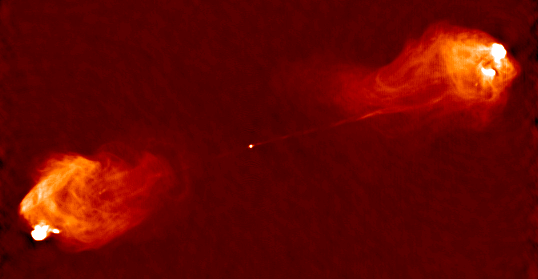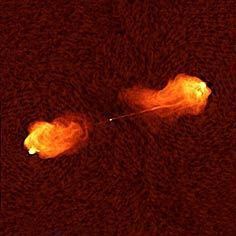Right ascension 19 59 28.3566 Redshift 0.056075 ± 0.000067 Apparent size (V) 0.549' × 0.457' Apparent mass ~100,000 billion M☉ | Declination +40° 44′ 02.096″ Type E Distance to Earth 600 million light years Magnitude 16.22 Apparent magnitude (V) 16.22 | |
 | ||
Similar Cassiopeia A, Centaurus A, 3C 273, Messier 87, 16 Cygni | ||
Bill mathews radio emitting electrons in the cygnus a cavity
Cygnus A (3C 405) is a radio galaxy, and one of the strongest radio sources in the sky. It was discovered by Grote Reber in 1939. In 1951, Cygnus A, along with Cassiopeia A, and Puppis A were the first "radio stars" identified with an optical source. Of these, Cygnus A became the first radio galaxy; the other two being nebulae inside the Milky Way. In 1953 Roger Jennison and M K Das Gupta showed it to be a double source. Like all radio galaxies, it contains an active galactic nucleus.

Images of the galaxy in the radio portion of the electromagnetic spectrum show two jets protruding in opposite directions from the galaxy's center. These jets extend many times the width of the portion of the host galaxy which emits radiation at visible wavelengths. At the ends of the jets are two lobes with "hot spots" of more intense radiation at their edges. These hot spots are formed when material from the jets collides with the surrounding intergalactic medium.

In fiction, Cygnus A appears in Carl Sagan's Contact as the result of beings actively creating a galaxy.

